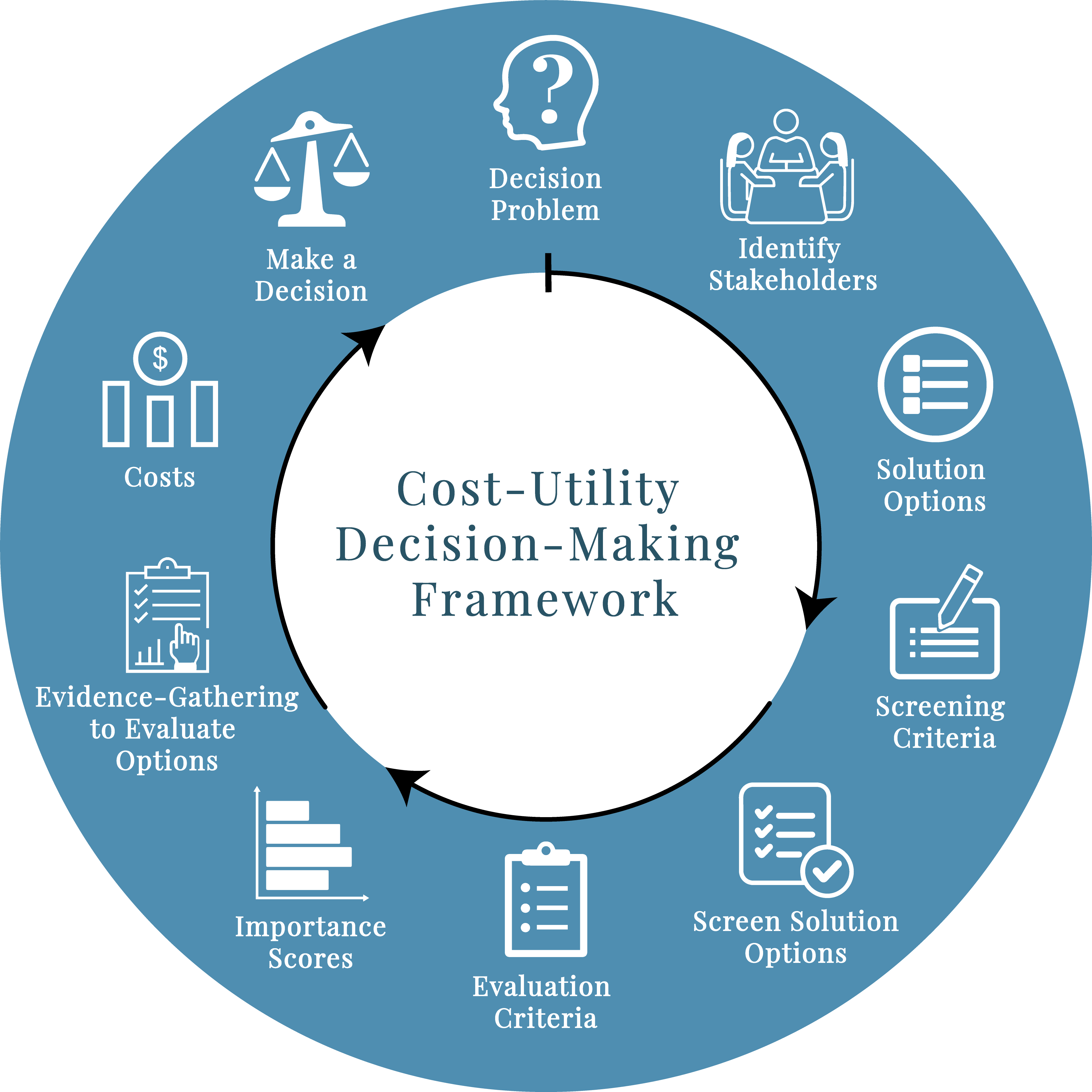
DecisionMaker® facilitates school, district, or state education agency decisions that involve a choice between alternative educational activities, strategies, and interventions. Examples may include the following:
- Choosing among several math curricula
- Selecting digital devices
- Allocating resources amongst competing priorities
- Deciding the best scale up/scale down scenario for an existing program
- Identifying which literacy programs best meet ESSA evidence requirements
- Choosing which school site will host a summer program
- Deciding where to invest professional development funds
You can use DecisionMaker® to work through a decision alone or in collaboration with stakeholders. Decision-makers identify those factors most important in distinguishing between alternative Solution Options and gather evidence to determine which one(s) best meet(s) stakeholder needs.
By juxtaposing the stakeholder value of each Solution Option - its “utility” - against its costs, DecisionMaker® allows you to review the trade-offs between monetary investments and stakeholder satisfaction.
Revisiting the decision after implementation to assess whether performance meets expectations helps meet ESSA requirements for ongoing efforts to examine the effects of activities, strategies, or interventions and to assess how well they work in the decision-maker’s own context.
We worked with many current education decision-makers and practitioners to adapt the cost-utility decision-making framework for educational contexts and to develop DecisionMaker ®:









